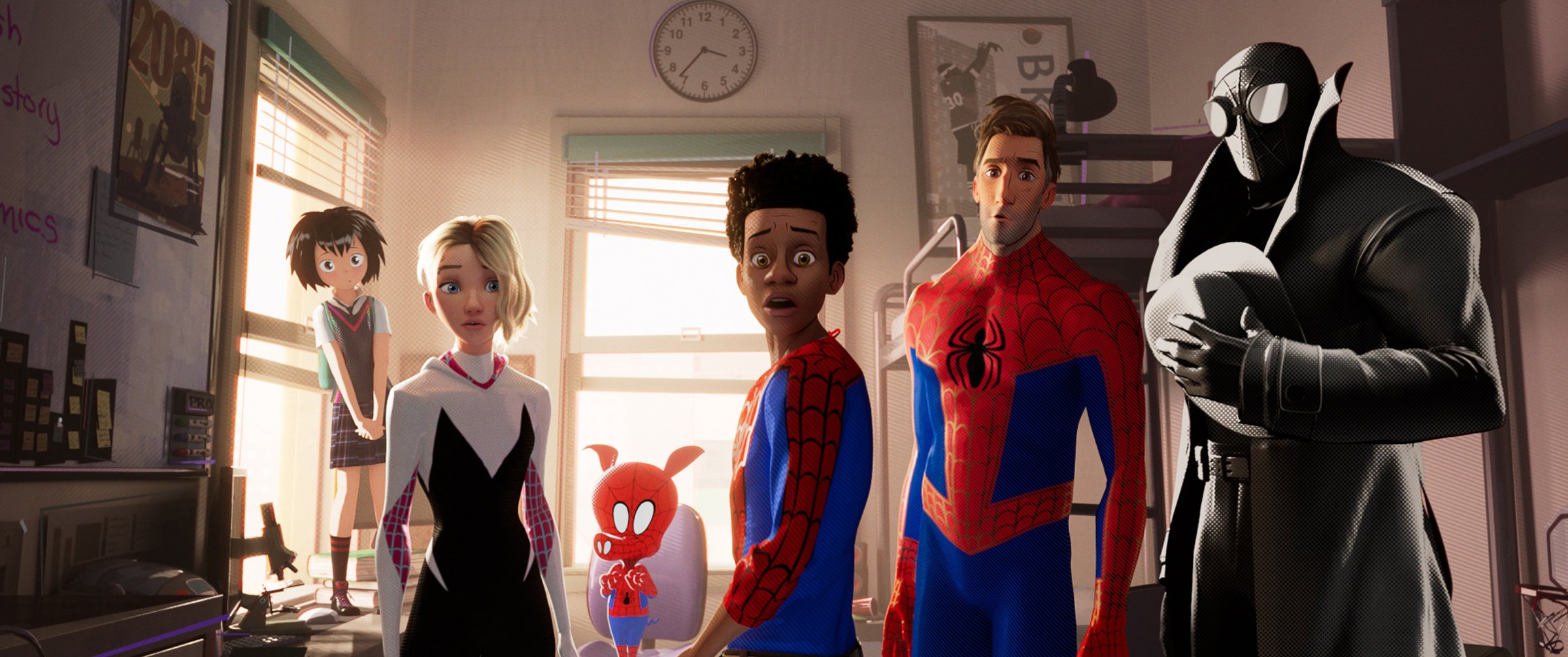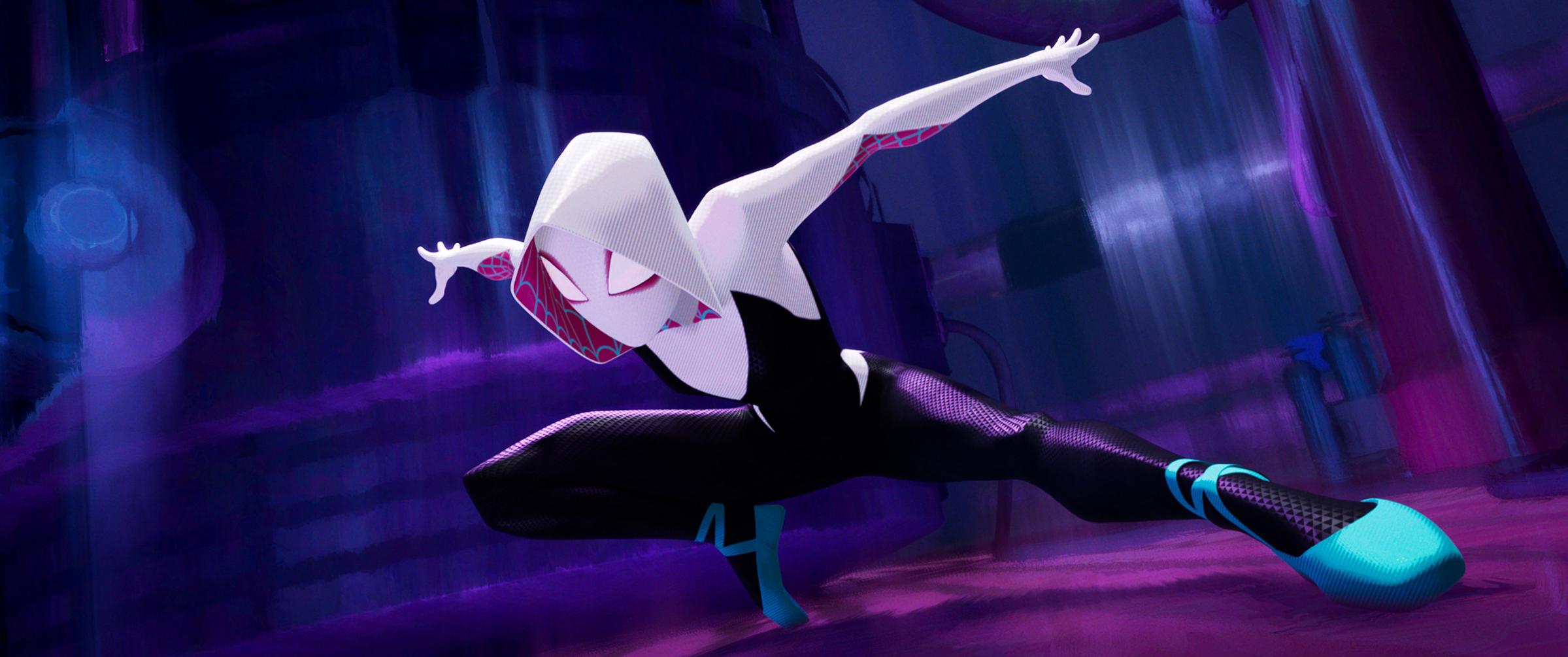
In a year so stuffed with comic-book characters that 26 superheroes jockeyed for the chance to punch one purple alien in Avengers: Infinity War, you might be forgiven for feeling a little superhero fatigue. Your friendly neighborhood Spider-Man — who, despite his modest moniker, has starred in no fewer than eight live-action movies in 16 years — has become the most overexposed superhero of all.
This year alone, the webslinger starred in three huge projects: the aforementioned Infinity War, a Spider-Man video game and now an animated film called Spider-Man: Into the Spider-Verse, out Dec. 14. And yet all three were met with widespread acclaim and commercial success (if early box-office predictions for Into the Spider-Verse are to be trusted, at least). That list excludes Venom, an offbeat film about Spider-Man’s villainous doppelgänger, but even that was a box-office smash. The character’s proliferation begs the question: Why aren’t audiences sick of Spidey?
Marvel legends Stan Lee and Steve Ditko conceived Spider-Man in 1962, when impressive but inaccessible heroes dominated comic books: Superman was an alien, Wonder Woman a demigoddess, Batman a brooding billionaire. Peter Parker was just a nerdy high school kid who couldn’t work up the courage to ask out the girl next door. He was young — like his audience — funny, flawed and relatable.
Spider-Man may be Marvel’s most popular character, but his success on the big screen has never been a guarantee. Following Sam Raimi’s acclaimed trilogy starring Tobey Maguire, which ran from 2002 to ’07, Sony rebooted the series in 2012 with two middling films starring Andrew Garfield that retreaded the ground of their predecessors. After all, an audience can be asked only so many times to watch Uncle Ben die while muttering something about power and responsibility.
And yet Sony has finally found a way to evolve a well-worn origin story. Another reboot in 2017, aptly called Spider-Man: Homecoming, revived Spidey’s film career. Like the two versions that came before, the story centered on a young, awkward white guy. But for the first time, Peter’s diverse group of friends realistically reflected the population of Queens.
This year’s PlayStation video game inched closer to modern reality too: in that version of the story, Peter is eight years into his career as a superhero and dealing with adult problems, like how he and Mary-Jane — who is now a journalist rather than an aspiring actor — can combat the dated gender roles of hero and damsel in order to fight evil as a team.

But it’s Into the Spider-Verse that finally asks the most interesting question: What if that pesky arachnid had bitten someone else? The movie details the origin story of Miles Morales (voiced by Shameik Moore), the teenage son of a black policeman (Brian Tyree Henry) and a Puerto Rican nurse (Luna Lauren Velez), who gets bitten by — you guessed it — a radioactive spider. Miles has patrolled the streets of New York City for years in the comics, but his big-screen debut thrusts him into the larger pop-culture conversation.
The film asserts that there’s nothing particularly special about Peter Parker, which may sound like sacrilege to comic-book purists. But Lego Movie duo Chris Miller and Phil Lord specialize in irreverence. (The two produced, and Lord co-wrote the film.) It begins with a cheeky montage of Peter’s life, including the embarrassing emo dance sequence from Spider-Man 3 and a Christmas album. “I always find a way to come back,” Peter says, winking at his unusual resilience. And then, as Miles looks on, Peter dies — at the hands of the villain Kingpin (Liev Schreiber), who opens a hole in the space-time continuum, ushering several other Spider-People from alternate universes into Miles’ Brooklyn.
First comes a curmudgeonly, 40-year-old Peter Parker (Jake Johnson), who’s divorced, a little chubby and very jaded. (Miles moans, “Why did I get stuck with a janky, old, broke hobo Spider-Man?”) But this Peter reluctantly mentors Miles, and later the two join forces with their spidery siblings from other worlds–Gwen Stacy (Spider-Gwen), a black-and-white Peter Parker (Spider-Man Noir), an anime-inspired Peni Parker and a pig named Peter Porker (Spider-Ham). The movie suggests that anyone — no, really, anyone — can wear the mask.
For Sony, that means an endless number of sequel and spin-off possibilities: the studio has already greenlighted Spider-Verse 2 and a Gwen Stacy movie. For audiences, especially kids, the multitude of heroes offers the reassuring message that you don’t have to be a white dude to save the world.
Miles proves to be more than just a Peter redux. Both his parents are alive, though his secret identity threatens his relationship with his policeman father, who openly criticizes Spider-Man’s rule-breaking methods. And Miles is just plain cooler than Peter — he has plenty of friends and a talent for graffiti art that eventually finds its way into his costume. But he’s starting at a new school for gifted kids and desperately wants to return to his old neighborhood. He’s lonely, and the superpowers don’t make his isolation any easier.
By playing with expectations of what Spider-Man is supposed to be, the cinematic universe expands to suggest that everyone can tap into their own power and win over fans — not just guys who look and act like Peter Parker.

Anyone already overwhelmed by the number of Spider-People onscreen should ready themselves for the next decade of filmmaking: next year alone, Tom Holland will star in Infinity War 2 as well as another solo film, Far From Home. Meanwhile, Sony is expanding the world of Spider-Man heroes and villains ever further with a Venom sequel, a Black Cat solo film and a movie about the villainous vampire Morbius.
Miles won’t be relegated to animated films forever, either: he plays a key role in the PlayStation game, and the end teases an expanded Miles story line in the inevitable sequel. Even the Holland films have hinted at Miles’ eventual appearance in the live-action movies. The question is whether Sony can maintain Miles’ appeal. The studio misstepped when Peter’s powers turned him into a cocky hero in the Garfield films. Any Spider-Man or Spider-Woman should feel overwhelmed by the responsibility.
At a time when characters like Wonder Woman and Black Panther have become icons of strength — they’re literally a deity and a king — Spider-Man reminds audiences of just how vulnerable heroes can be. The best moments from the Spider-Man canon are those that zero in on Peter’s youth and innocence: that time when a train full of New Yorkers save a mask-less Spider-Man in Spider-Man 2 and realize their hero is only a teen; the much memed moment in Infinity War when Spider-Man mumbles, “Mr. Stark, I don’t feel so good,” like a little kid; and, in Into the Spider-Verse, a scene where Miles rips off his own mask to reveal to an enemy that he’s just some terrified high schooler.
As long as Spidey is a vulnerable hero, what the person under the mask looks like isn’t all that important. Spider-Verse does not make much hay of the gender or ethnicity of Miles, Gwen and Peni. What matters is that they each remind audiences that, to quote Aunt May, “There’s a hero in all of us.”
More than half a century ago, Spider-Man became the original everyman. Now he’s finally starting to look like it.
More Must-Reads from TIME
- Cybersecurity Experts Are Sounding the Alarm on DOGE
- Meet the 2025 Women of the Year
- The Harsh Truth About Disability Inclusion
- Why Do More Young Adults Have Cancer?
- Colman Domingo Leads With Radical Love
- How to Get Better at Doing Things Alone
- Michelle Zauner Stares Down the Darkness
Write to Eliana Dockterman at eliana.dockterman@time.com